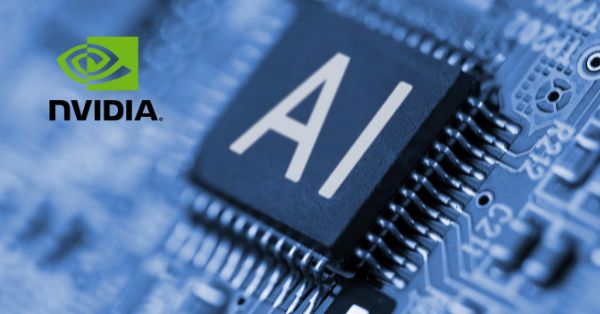Nvidia’s China Sales Halt Highlights AI Hardware Decoupling
Nvidia’s CEO has warned that U.S. export controls have effectively halted the company’s China business, sharpening the stakes for AI leadership, supply chains, and enterprise buyers.
Jensen Huang’s Warning on China Access and U.S. AI Competitiveness
In recent broadcast remarks, Nvidia’s chief executive argued that U.S. access to China is now a prerequisite for maintaining American competitiveness in AI. He indicated the company is modeling China sales at effectively zero for the next two quarters under current rules, acknowledging that the revenue loss constrains reinvestment in R&D and manufacturing capacity. The message was blunt: a prolonged lockout weakens the U.S. AI stack abroad and cedes room to rivals at home and overseas.
China’s $50B–$200B AI Accelerator Market Opportunity
Huang pegged China’s accelerator market at roughly $50 billion today with potential to reach up to $200 billion by decade’s end. That growth trajectory matters for every layer of the AI value chain—semiconductors, systems, networking, cloud, and services. For Nvidia, those dollars feed the flywheel that funds new architectures, CUDA tooling, software frameworks, and ecosystem programs. For U.S. policy, the tension is clear: national security controls that restrict advanced parts also reshape global market share and the location of innovation.
U.S. Export Controls Tighten on High‑End AI Chips
U.S. authorities have tightened rules on high‑end AI accelerators to China since late 2022, progressively capturing performance‑tuned variants. In a recent TV interview, the U.S. president reiterated that the most advanced chips would be kept for the domestic market, signaling little near‑term relief. That stance effectively blocks Nvidia’s flagship data center parts and adjacent platform software from China’s largest buyers.
AI Infrastructure and Cloud Strategy Impacts Across Regions
The freeze will reverberate across hyperscale buildouts, carrier edge strategies, and enterprise AI roadmaps on both sides of the Pacific.
Accelerating Dual AI Ecosystems: U.S.-Allied vs China
Restrictions accelerate a twin‑track AI world. In the U.S. and allied markets, Nvidia, AMD, and Intel compete to supply training and inference at scale, with ecosystems built around CUDA, ROCm, and oneAPI. In China, domestic accelerators and systems vendors are poised to fill the vacuum, backed by large cloud providers and OEMs. As Chinese platforms mature, they will optimize for local frameworks and toolchains, reducing dependence on U.S. software stacks.
Shifting Data Center Networking and System Design Choices
Data center and telecom operators must plan for heterogeneity. Choices like InfiniBand versus Ethernet with RDMA/ROCE, PCIe versus custom interconnects, and OAM/OCP‑inspired module formats will increasingly depend on which accelerator ecosystem is deployed in a region. Expect more demand for portable orchestration layers, containerized runtimes, and workload abstraction to shield applications from hardware churn.
AMD and Intel Gain Openings as Buyers Seek Alternatives
While Nvidia faces a China revenue gap, AMD’s Instinct portfolio and Intel’s Gaudi line can capture share in markets where supply is constrained and buyers seek price‑performance alternatives. Cloud providers and telcos that adopt multi‑vendor GPU strategies gain leverage on pricing and supply, but they also inherit software portability and operations complexity.
China’s Accelerator Ramp Expands Scale and Export Options
Pullbacks by U.S. vendors create headroom for Chinese chipmakers and system integrators to scale. As volumes rise, cost curves improve, software layers harden, and exportable products emerge for regions open to Chinese technology. Over time, that dynamic can compress margins globally and erode the moat created by scale and ecosystem advantages.
12–18 Month Scenarios for AI Chips, Policy, and Supply
Enterprises should model multiple policy and market outcomes and align procurement and architecture choices accordingly.
Baseline: Controls Persist and Nvidia’s China Sales Stay Zero
Under the current trajectory, U.S. high‑end parts remain off‑limits, Nvidia’s China revenue trough extends at least two quarters, and Chinese buyers accelerate qualification of domestic accelerators. Price inflation for top‑tier GPUs outside China may moderate as supply catches up, but software talent and power capacity remain bottlenecks.
Partial Opening: Down‑binned SKUs and Compliance Guardrails
One outcome could be sanctioned, down‑binned accelerators with strict performance caps and compliance guardrails. That would restore limited revenue while preserving policy intent, but it complicates product roadmaps and channel management. Software feature gating and remote‑management controls would become part of compliance engineering.
Prolonged Decoupling: Dual Chip and Software Stacks
If controls broaden or harden, expect a durable bifurcation: distinct chip roadmaps, interconnects, and software ecosystems, with limited interoperability. Standards bodies and open formats—ONNX for models, Kubernetes for orchestration, and open compilers—will matter more, but fragmentation risk remains high for tools and performance optimizations.
Action Plan for Telecom and Enterprise AI Buyers
Pragmatic moves today can reduce risk, preserve optionality, and lower total cost of AI ownership.
Reduce Architecture Risk with Model and Runtime Portability
Adopt a multi‑vendor AI stack strategy. Prioritize model portability via ONNX, containerized runtimes, and abstraction layers for training and inference. Ensure your MLOps tooling supports CUDA and ROCm paths, and assess oneAPI where relevant. Build internal competency to retarget kernels with libraries like Triton or leverage compiler toolchains that can span backends.
Design for Network Flexibility: InfiniBand and Ethernet RDMA
Design clusters that can swing between InfiniBand and Ethernet RDMA without wholesale redesign. Validate NCCL‑equivalent collectives and communication libraries across vendors. For telco edge, standardize on CNI plugins, DPU/SmartNIC support, and observability that works across accelerator types.
Secure Accelerator Supply, Optics, and Power Capacity Early
Secure multi‑quarter allocations for accelerators, high‑speed optics, and power infrastructure. Model TCO with realistic power and cooling assumptions; many inference workloads pencil out better on next‑gen, mid‑range parts if software is optimized. Consider managed cloud bursts for training while keeping latency‑sensitive inference on‑prem or at the edge.
Tighten Export‑Control Compliance and Procurement Governance
Map export‑control exposure across subsidiaries, partners, and supply chains. Update contracting to include sanctions clauses and audit rights. For multinational deployments, segment architectures to avoid cross‑border compliance drift.
Maintain a Watchlist of Policy, Roadmaps, and GPU Supply
Track U.S. Bureau of Industry and Security updates, vendor product roadmaps, MLPerf results, cloud GPU availability and pricing, and the pace of China’s domestic accelerator ecosystem. Any inflection here can reset delivery timelines and unit economics for AI programs.
Bottom Line: Design for Choice, Portability, and Compliance
Nvidia’s warning on “zero” China sales is more than a quarterly wobble; it is a marker for how fast the AI hardware map is redrawing—and why buyers should design for choice, portability, and compliance from day one.








































